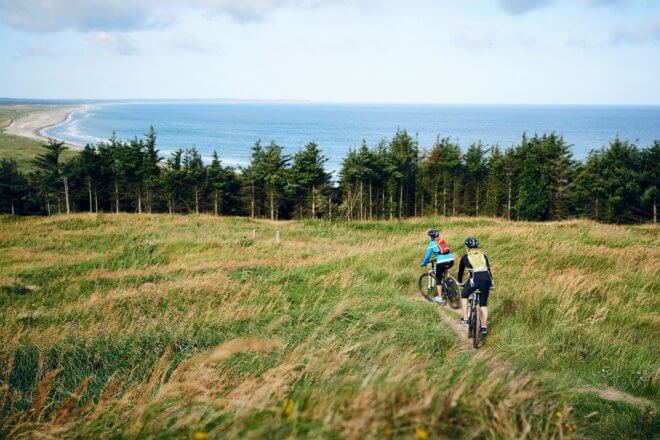Alternative Travel Index Rank: #12
Denmark also ranks 5th in the Top 10 Eco Travel Destinations
Excels in level of peace, electricity supply, and environment protection
Population and tourists density at peak season: 148 (medium)
Once the seat of Viking raiders and later a major north European power, Denmark has evolved into a modern, prosperous nation that is participating in the general political and economic integration of Europe, even though it’s not part of the European Monetary System. Danes enjoy a high standard of living and the country ranks near the top in terms of education, health care, protection of civil liberties, democratic governance, prosperity and human development. Add to this a well-preserved cultural heritage and the Danes legendary sense of design and architecture, and you will have an intriguing travel destination.
Travel Costs
Denmark ranks #135/141 for price competitiveness in Justraveling’s Alternative Travel Index. Average travel costs per day: $95 (backpacker) – $309 (mid-range). Cheapest Danish cities: Skive, Aalborg, Odense. Most expensive Danish cities: Horsens, Copenhagen, Kolding.
Best Time to Go
May-Jun and Sep-Oct are the best time to go to Denmark, with a cool climate, more daylight, and fewer crowds. The weather in Denmark can abruptly change in a very short time, due to its position between a continent and an ocean.
Places to Visit
Originally a Viking fishing village founded in the 10th century, Copenhagen is Denmark’s capital and largest city, with nearly 2 Mio people in its metropolitan area. The city offers plenty of cultural experiences and design inspiration.
The secluded island of Anholt, midway between Jutland and Sweden, at the entrance to the Baltic Sea, hosts the largest “desert” in Northern Europe, one of the biggest colonies of seals in Denmark, and only two inhabited villages.
The Rold Forest (Rold Skov) comprises several distinct areas and woodlands in a hilly terrain, giving rise to a number of springs, streams and lakes. It has a varied fauna which includes many bird species, deers, badgers, and foxes.
Ertholmene is a small archipelago situated northeast of Bornholm in the Baltic Sea, that consists of 3 main islands, plus a number of minor rocks and skerries. It is home to a large a bird reserve, as well as old defense installations.
Mols Bjerge National Park, in Central Jutland, has a rolling and varying topography of woodlands and open countryside and includes many types of habitats, perfect to hike or bike across forests, meadows, and the sea coast.
Lille Vildmose, 45 km southeast of Aalborg, is Denmark’s largest protected area, and hosts the largest raised moor in Northern Europe. Its unique habitat consists of raised bogs (once part of the seabed), former islands (during the Stone Age), and a large area of coastal hills and beach meadows.
Travel Ideas and Things to Do
Denmark is probably the most cycle friendly country in the world. With more than 12.000 km of cycle routes, gentle terrain, and great landscapes, this clearly should be a preferred destination for cycling holidays. More info here.
Learn about and embrace a sustainable organic lifestyle by choosing one of the hosts currently looking for WWOOFers. Free food and accommodation in ecological farms, in return for volunteer help, doesn’t look like a bad deal.
Drivvejen, the Danish section of the long distance North Sea Trail, stretches from northern Jutland to the border with Germany. The 200 km trail touches numerous historical sites, including Ribe, the oldest extant town in Denmark.
More active travel ideas for your next trip can be found in the Hiking Series. Check out these five routes to enjoy an awesome day hike in Denmark.
This Travel Guide is a work in progress. Improve it with a Danish touch!
- Browse All European Destinations
- World’s Best Alternative Travel Destinations
- Trip Planning: Inspiration, Budget, Flights, Accommodations, Tools
Sources: some text excerpts from Wikitravel & Wikipedia; travel cost data from Numbeo.




